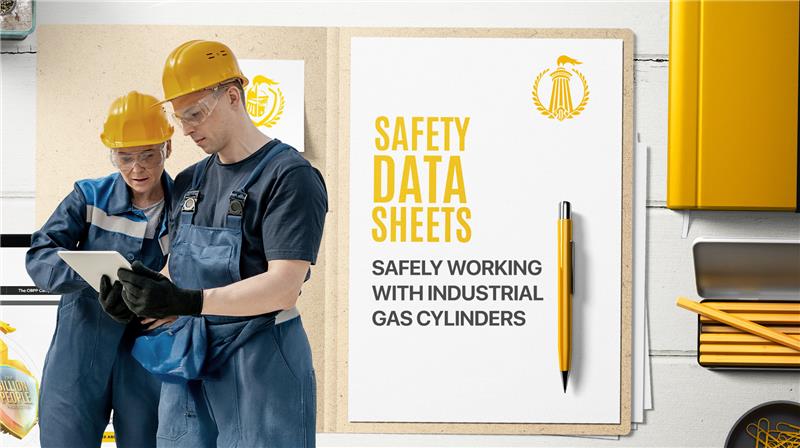
Industrial gas cylinders are common in workplaces that deal with welding, refrigeration, laboratory testing, or high-pressure systems. But routine use doesn’t make them less risky. Even a slight oversight, like an unsecured cylinder, a hidden leak, or an incompatible gas, can lead to a serious incident.
That’s why the Safety Data Sheet (SDS) isn’t just there to meet legal requirements. It’s your first reference for safe handling. Whether you’re moving a cylinder across the workshop or setting up for use, the SDS gives you the information you need to make the right decisions.

Industrial gas cylinders are common in workplaces that deal with welding, refrigeration, laboratory testing, or high-pressure systems. But routine use doesn’t make them less risky. Even a slight oversight, like an unsecured cylinder, a hidden leak, or an incompatible gas, can lead to a serious incident.
That’s why the Safety Data Sheet (SDS) isn’t just there to meet legal requirements. It’s your first reference for safe handling. Whether you’re moving a cylinder across the workshop or setting up for use, the SDS gives you the information you need to make the right decisions.
Personal protective equipment isn’t a generic checklist. What you wear depends entirely on the gas in use, and that starts with checking the SDS.
Most situations will require goggles or safety glasses, gloves that can withstand chemical contact, and sturdy footwear. Some jobs may also call for a face shield or a respirator, depending on whether the gas is toxic, corrosive, or flammable.
If the SDS specifies flame-resistant clothing or anti-static gear, that isn’t a suggestion. It reflects the risk associated with the gas you’re handling. Wear what’s recommended, not what’s convenient.
Gas cylinders must always be stored upright and securely fastened. If one tips and the valve is damaged, the pressure can turn it into a projectile.
The location matters just as much as the method. Storing a cylinder in a hot corner of the site, or too close to a workbench, could put people at unnecessary risk. If you’re not sure whether the storage space is suitable, check the SDS and local guidance together.
Cylinders are heavy and pressurised. That combination alone makes them dangerous if mishandled.
Follow the steps each time. It doesn’t take long, and it prevents accidents that could shut down operations or injure staff.
Before using any industrial gas cylinder, inspect it visually and functionally.
If anything looks wrong or doesn’t match the SDS, isolate the cylinder and report it. Using a cylinder without proper markings is a breach of safety policy, no matter how urgent the job feels.
The SDS doesn’t just outline hazards. It tells you how to store, handle, and respond to emergencies involving the gas in the cylinder. If a valve fails, if a fire breaks out, or if someone is exposed to the gas, the SDS explains what to do.
Keep copies accessible near the worksite. Make sure all team members know where to find them. Use the SDS during inductions, refresher training, and toolbox talks, not just when something goes wrong.
Safe handling of industrial gas cylinders starts with awareness and ends with action. The Safety Data Sheet provides the information you need, but only if you use it.
That’s how you maintain a safe site and avoid costly mistakes.
2025 © Copyright International Safety Data Sheet Services
To continue, please log in or Register for your free account
To continue, please log in or Register for your free account